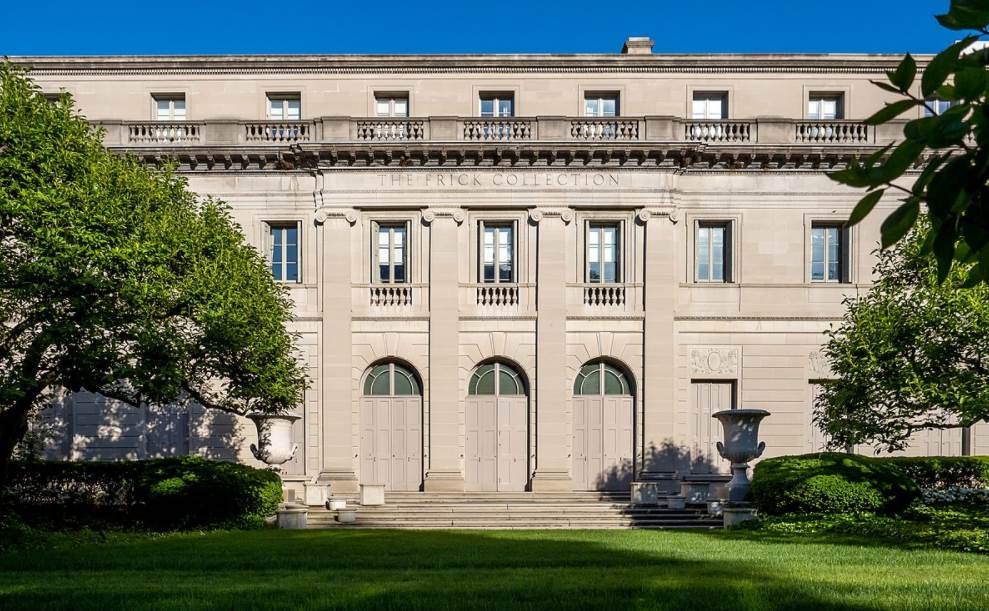When Jan van Eyck (1390-1441) became the court painter of Philip the Good, Duke of Burgundy, in Bruges, the Renaissance artist was given a lot of freedom.
Many wealthy patrons wanted to commission works from the Early Netherlandish Master, mainly because his revolutionary use of oils resulted in incredible masterpieces.
Let’s take a closer look at the Madonna of Jan Vos by Jan van Eyck, a delicate little painting with intriguing stories.
1. It’s considered to be the final painting by the Flemish artist
Jan van Eyck was one of the most important artists of the early Renaissance and had a great influence on other artists of northern Europe.
While crediting him with inventing oil painting might be a bit exaggerated, he was one of the first to master this painting material.
This allowed him to integrate an incredible level of detail in his works that still baffles viewers today. We can only imagine the effect his works must have had on contemporary viewers.
All good things must come to an end, and Jan van Eyck passed away on July 9, 1441. The Madonna of Jan Vos was most probably the final painting that he ever worked on.
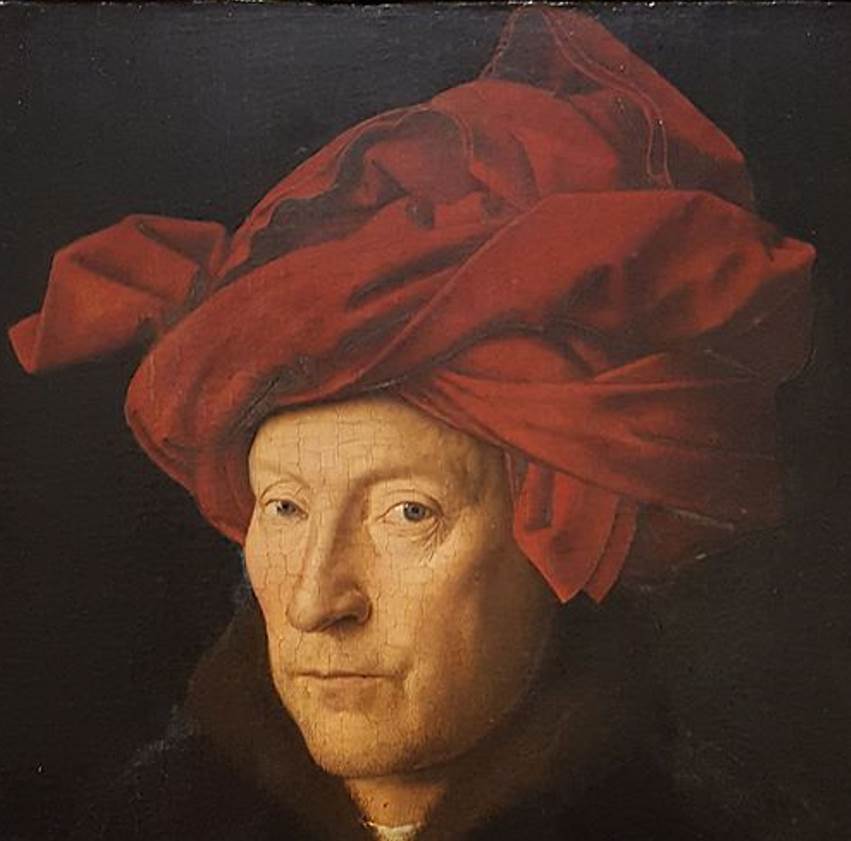
2. Jan van Eyck probably never managed to complete the painting
Art historians estimate that he earned the commission of this painting around March 1441. This was just a couple of months before he passed away.
Regardless of this notion, the quality of the figures and background in the Madonna of Jan Vos are all signature characteristics of this extremely talented painter.
Although there has been some debate about what elements were by the hand of Van Eyck, the consensus is that he painted the central figures and laid the foundation for the background as well.
A very talented member of his workshop completed the rest of the painting and most probably copied the background from earlier drawings made by Jan van Eyck.
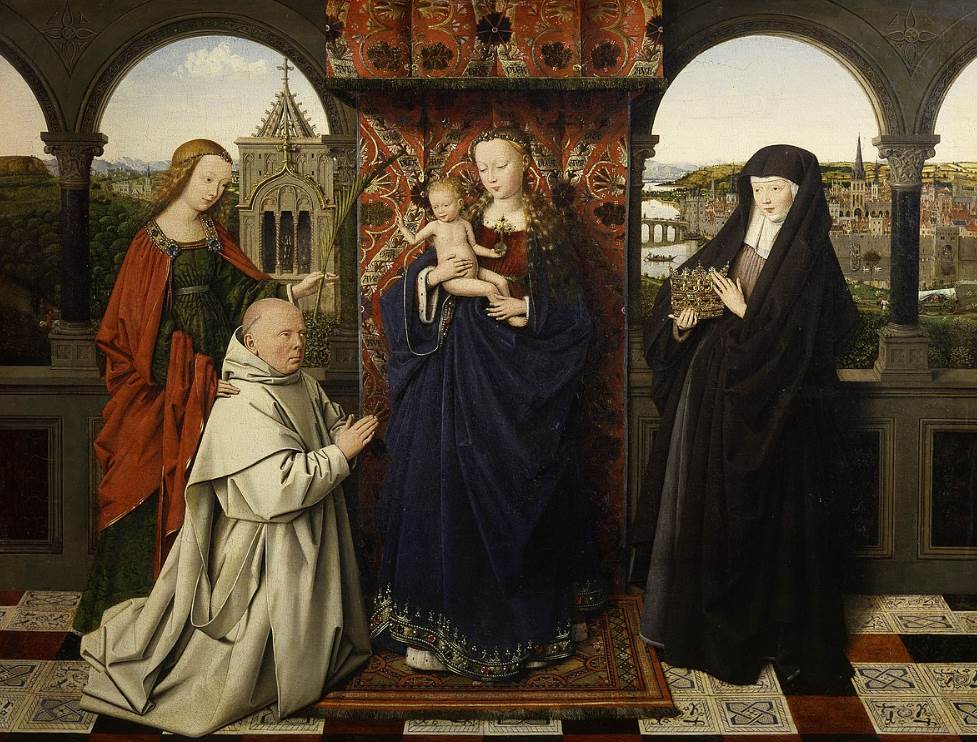
3. The painting was commissioned by a Carthusian monk in Bruges
As the name of the painting suggests, the central figures are the Virgin Mary who is holding her baby Jesus Christ and a kneeling man who was named Jan Vos.
He became the prior of a Carthusian Monastery near Bruges in March 1441. He certainly commissioned the painting shortly after he took this position.
The Carthusians are part of the Order of the Carthusians and are a religious order of the Catholic Church founded in the year 1084. The clothes worn by the man are the typical outfit worn by monks of this order.
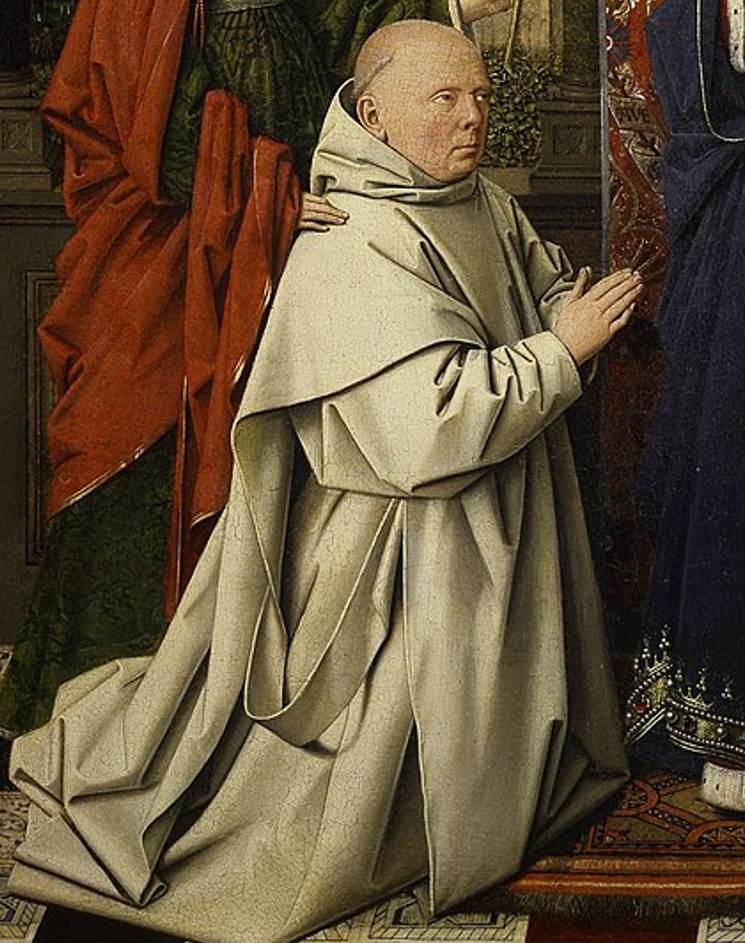
4. The donor’s pose looks very similar to that of other patrons
Jan van Eyck was already one of the most celebrated masters in northern Europe by the time that Jan Vos commissioned this painting.
This means that he already completed several masterpieces, including some of which the composition looks strikingly similar to the Madonna of Jan Vos.
While the details differ in both works, the Madonna of Chancellor Rolin and the Virgin and Child with Canon van der Paele feature the donors, Nicolas Rolin and Joris van der Paele respectively, in a very similar kneeling position.
It’s likely that Jan Vos saw one of these works or preparatory drawings and based his instructions on one of them.
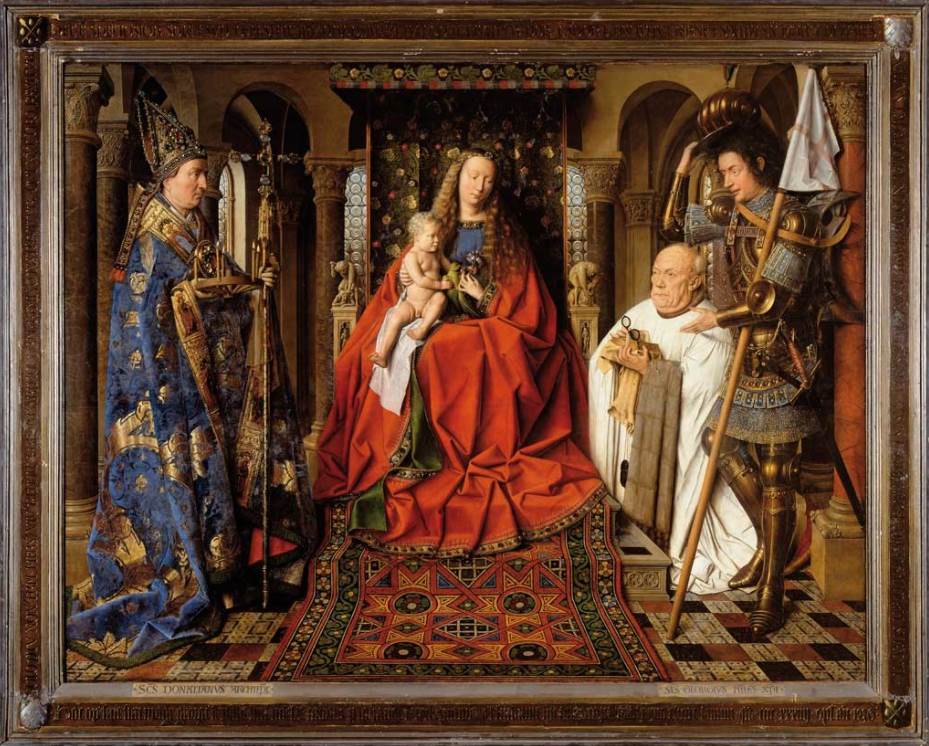
5. The central figures are accompanied by two important women
The Virgin Mary and her baby Jesus Christ are placed inside a throne that is decorated with an oriental carpet. This is very similar to how she is depicted in other paintings by van Eyck.
Behind Jan Vos we can see Saint Barbara, the patron saint of the Carthusians. She can be identified by the building in the background which is the so-called “Tower of Barbara.”
Saint Barbara was a Christian saint who lived in the 3rd century and who was held captive inside a tower by her father. She was baptized by a priest inside this tower, an event that resulted in her death at the hands of her Pagan father.

On the other side, we can see Saint Elizabeth of Hungary (1207-1231), a Hungarian princess who spent her wealth helping the sick. She is wearing a nun’s outfit worn by members of the Carthusian Order.
She is depicted in front of a magnificent medieval urban landscape that most likely features imaginary buildings.
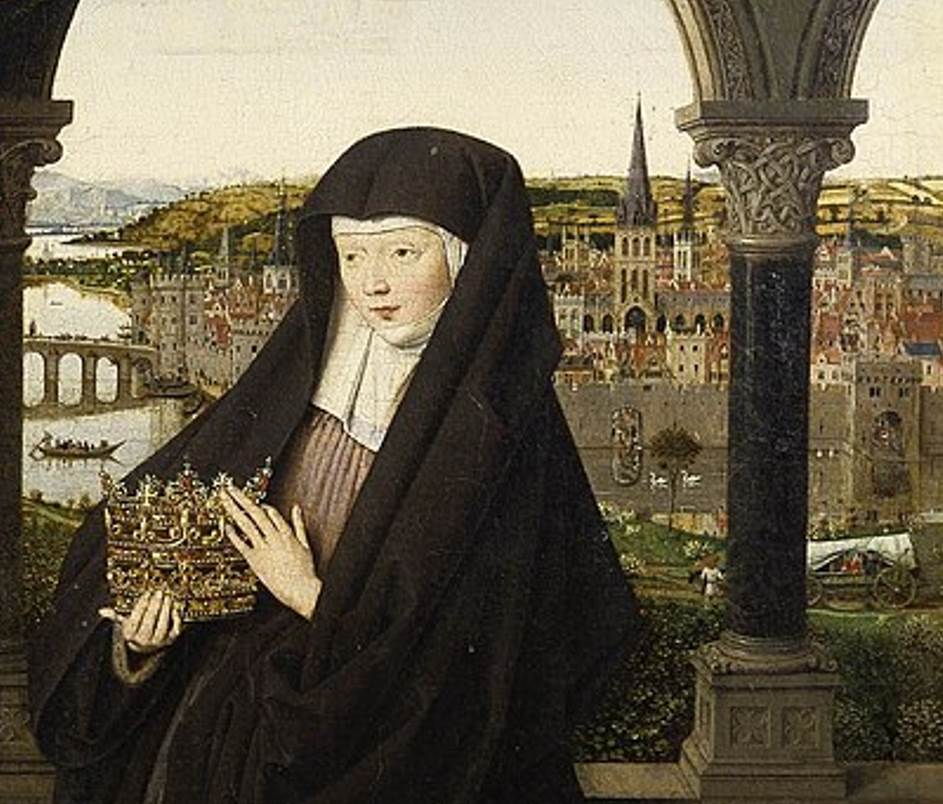
6. Jan Vos commissioned a very similar painting a decade later
Since Jan van Eyck had passed away while he was painting the Madonna of Jan Vos, his workshop had to complete the painting.
Whether or not this was the reason why the monk commissioned another work in 1450 remains unknown. It does bear a striking resemblance to van Eyck’s masterpiece.
This painting is now known as the “Exeter Madonna” and was completed by Petrus Christus (1410/1420 – 1475/1476), another Early Netherlandish master who took over the role of Jan van Eyck as the leading arts in the Low Countries.
This small work of art has dimensions of 19.5 x 14 centimeters (7.6 x 5.5 inches) and is part of the collection of the Gemäldegalerie in Berlin.
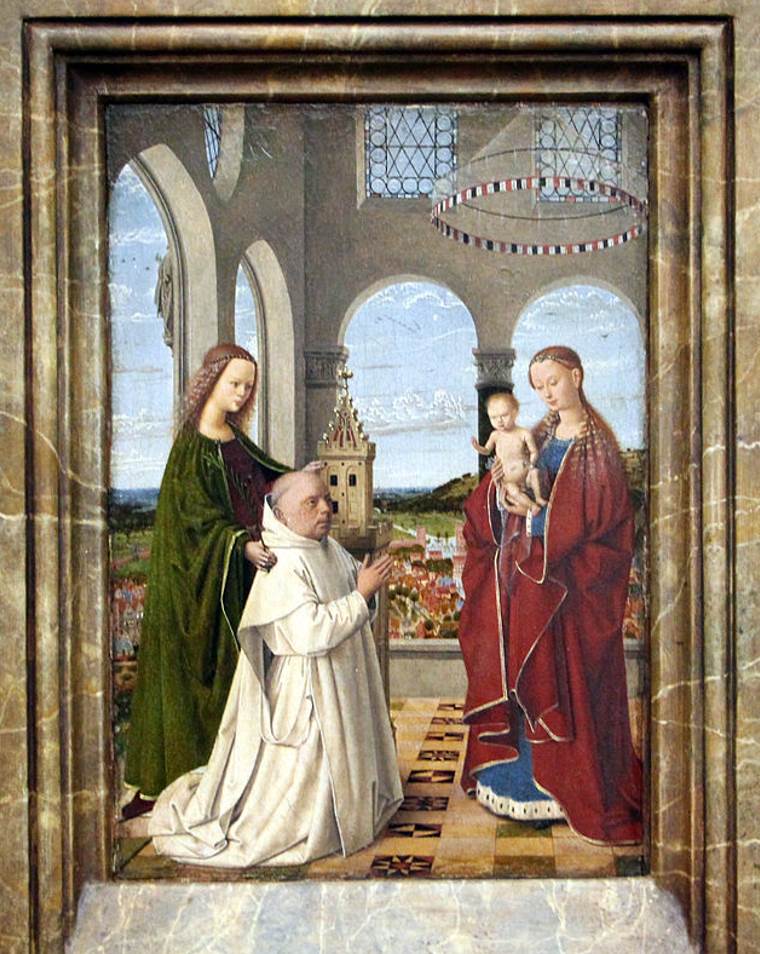
7. How big is the Madonna of Jan Vos by Jan van Eyck?
Just like the Exeter Madonna, the painting described in this article is a relatively small work of art. That’s mainly because it served as a devotional piece that could easily be carried along.
The Madonna of Jan Vos by Jan van Eyck is an oil on panel painting that has dimensions of 47 x 61 centimeters (18.5 x 24 inches).
8. Where is the painting located today?
The painting was acquired by Baron James de Rothschild in Paris in the year 1850. It remained part of the family’s collection for over a century.
It was acquired in 1954 by the museum that was established in 1935 from the collection of American industrialist Henry Clay Frick (1849–1919).
Along with numerous other masterpieces by Old Masters, you can admire the painting at the Frick Collection in New York City.
